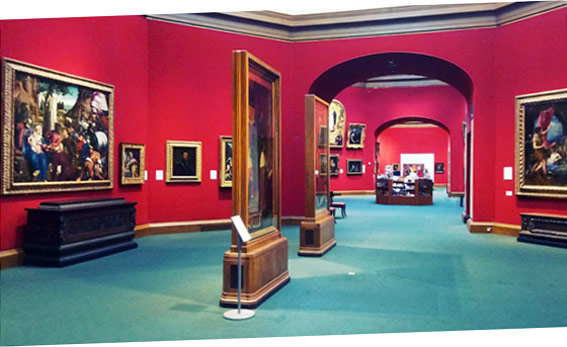Discover Edinbourgh
1 – Today Edinburgh, Scotland’s capital – And after so many castles, the Scottish National Gallery in Edinburgh (free of charge) is to be seen.
Scottish National Gallery

You will have the chance to admire the copy of Antonio Canova’s “The Three Graces” the Duke of Bedford commissioned the artist himself, in order to display it in his English home.
Beautiful paintings, amongst many others, by Botticelli, Raphael, Titian, Rembrandt, Vermeer, Constable, Turner, Monet, Van Gogh and Gauguin as well as by a large number of Scottish painters are on display.
Scottish Monument

With a small detour it is worth visiting the Gothic monument dedicated to the Scottish author Sir Walter Scott.
The tower is 61 feet high (61.11 m) and has observation platforms with panoramic views over Edinburgh.
Designed by George Meikle Kemp self-taught designer and architect.
The monument carries 64 figures of characters from Scott’s novels, sculpted by Scottish sculptors, construction began in 1841 and lasted four years.
Things to do in Edinburgh

Take a stroll through the narrow streets of this grey but fascinating town and wander around the closes (small alleys ending up in courtyards) in the Old Town.

Edinburgh is a young and lively town, especially in the summer, which is enlivened by a large number of festivals. During the month of August, Edinburgh is home to the International Festival of performing arts (the largest in the world) as well as to the Fringe Festival. (An alternative festival featuring myriad of artstic events all over the town)

Edinburgh Ghost Tour: Mysteries, Legends and Murders
Edinburgh is very rich in history
Edinburgh, the capital of Scotland, has a long and interesting history. The city has very ancient origins dating back to the Iron Age, but its most documented history begins in the 10th century when it was founded as a fortified settlement. In the 13th century, Edinburgh became a royal city and was fortified with walls, towers, and bastions.
During the 14th and 15th centuries, Edinburgh became an important city for trade and the textile industry, and it was also one of the main centers of culture and education in Scotland. In the 16th century, Edinburgh was the center of the Scottish Reformation, and the Protestant movement took hold in the city.
In the 17th century, Edinburgh was the stage for many important historical events such as the English Civil War and the Wars of the Three Kingdoms. In 1707, the Union of Scotland and England was signed in Edinburgh, and the city became the capital of united Scotland.
During the 18th century, Edinburgh became an important cultural center of the Scottish Enlightenment, with important figures like David Hume, Adam Smith, and Robert Burns living in the city. In the 19th century, Edinburgh was an important industrial and port center, and the city was also at the center of the Scottish literary scene, with writers like Sir Walter Scott and Robert Louis Stevenson.
Today, Edinburgh is a modern and lively city, but it still retains many of its historical and cultural monuments, such as Edinburgh Castle, Holyrood Palace, and the Royal Mile.

